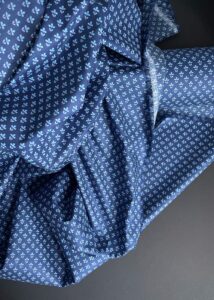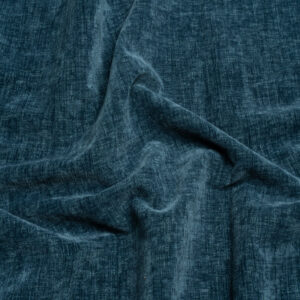The Bible does not mention spandex and wool, as spandex is a modern synthetic fabric developed in the 20th century, long after biblical times. However, the Bible does address the mixing of different types of fabrics, specifically in the context of ancient laws and customs. Below is an article exploring why the Bible discusses fabric mixing, focusing on the historical and cultural context of these mentions.
Why Does the Bible Mention Fabric Mixing, Including Wool?
Introduction
Fabric compatibility is crucial in fashion and sewing, impacting both aesthetics and functionality. Understanding the historical context of fabric mixing can offer insights into modern textile practices. This article explores why the Bible discusses fabric mixing, particularly focusing on wool, and what it means for contemporary fabric use.
Biblical Context of Fabric Mixing
The Bible does not mention spandex, but it does reference fabric mixing, particularly in Leviticus 19:19 and Deuteronomy 22:11, which prohibit wearing garments made of wool and linen mixed together. These laws were part of a broader set of purity regulations for the Israelites.
Why Were These Laws Important?
- Religious Significance: The mixing of wool and linen was prohibited as part of the holiness code, symbolizing the Israelites’ separation from other nations and their dedication to God.
- Symbolic Meaning: These laws were likely symbolic, emphasizing purity and the maintenance of distinct categories in religious practices.
Compatibility Analysis: Wool and Modern Fabrics
While the Bible focuses on wool and linen, modern textiles like spandex are often combined with natural fibers for diverse applications. Here’s a look at the compatibility of wool with contemporary fabrics.
Compatibility: YES
Wool can be combined with synthetic fabrics like spandex, offering enhanced functionality.
- Texture and Weight: Wool’s natural texture and weight complement spandex’s stretchiness, creating a balanced fabric.
- Stretch and Durability: Spandex adds elasticity, while wool provides warmth and resilience.
- Care Requirements: Both fabrics require gentle care, but spandex’s synthetic nature can complicate washing and drying.
Fabric Properties Comparison Table
| Property | Wool | Spandex |
|---|---|---|
| Fiber Content | Natural | Synthetic |
| Weight and Thickness | Medium to heavy | Light |
| Breathability | High | Low |
| Stretch | Low | High |
| Wrinkle Resistance | Moderate | High |
| Care Instructions | Cool wash, air dry | Cold wash, air dry |
| Durability | High | High |
Benefits of Mixing Wool with Modern Fabrics
- Enhanced Texture: Combining wool with spandex creates a unique tactile experience.
- Improved Comfort: The elasticity of spandex enhances the comfort of wool garments.
- Better Drape: The combination allows for improved garment flow and movement.
- Cost-Effectiveness: Mixing fabrics can reduce overall material costs.
- Seasonal Versatility: Wool provides warmth, while spandex offers flexibility for various climates.
- Design Possibilities: The blend allows for innovative fashion and decor designs.
Potential Challenges
Mixing wool with synthetic fabrics can present challenges.
- Different Shrinkage Rates: Wool may shrink more than spandex.
- Conflicting Care Requirements: Wool’s need for gentle washing conflicts with spandex’s care needs.
- Texture Clash: The natural texture of wool may not always blend seamlessly with spandex.
- Seam Puckering: Differences in fabric tension can cause puckering.
- Color Bleeding: Wool’s natural dyes may bleed onto synthetic fibers.
Solutions
- Pre-wash fabrics to minimize shrinkage.
- Use fabric softeners to reduce texture clash.
- Test colorfastness before washing.
Sewing & Styling Tips
- Sewing Techniques: Use stretch stitches to accommodate spandex’s elasticity.
- Needle and Thread: Use a ballpoint needle and polyester thread for best results.
- Interfacing Needs: Use lightweight interfacing to maintain fabric flexibility.
- Seam Finishing: Overlock seams to prevent fraying.
- Pattern Selection: Choose patterns designed for stretch fabrics.
- Styling Ideas: Use wool-spandex blends for activewear and tailored garments.
Care & Maintenance Guide
- Washing Instructions: Use cold water and mild detergent.
- Drying Recommendations: Air dry to prevent shrinkage.
- Ironing Tips: Use a low heat setting.
- Stain Removal: Treat stains promptly with gentle cleaners.
- Long-Term Care: Store garments flat to maintain shape.
FAQ Section
- Can you wash wool and spandex together? Yes, but use cold water and a gentle cycle.
- Will wool shrink more than spandex? Yes, wool is more prone to shrinkage.
- What needle size should I use for sewing wool and spandex together? A ballpoint needle, size 70/10 or 80/12, is recommended.
- Can you mix wool and spandex in one garment? Yes, they can be combined for enhanced flexibility and warmth.
- How do you prevent seam puckering when combining these fabrics? Use stretch stitches and stabilize seams with interfacing.
- Is it okay to mix wool and spandex for upholstery? Yes, but ensure the blend meets durability and care needs.
- What’s the best way to finish seams with wool and spandex? Overlocking or serging seams is effective.
Understanding the historical context of fabric mixing in the Bible and applying these insights to modern textile practices can enhance your sewing and design projects. By combining wool with modern fabrics like spandex, you can create versatile, comfortable, and stylish garments.


Leave a Reply